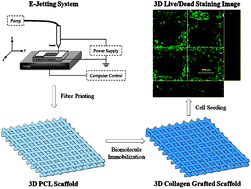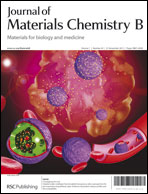Collagen grafted 3D polycaprolactone scaffolds for enhanced cartilage regeneration
Abstract
Current surgical and repair treatments for articular cartilage defects still do not give satisfactory long-term results. Scaffold-based tissue engineering is the subject of much intensive interest. However, one major hurdle is that it is unable to accurately replicate the internal three dimensional (3D) microstructure of cartilage. In this work, a novel electrohydrodynamic printing (E-Jetting) technique was employed to fabricate 3D polycaprolactone (PCL) scaffolds, followed by collagen grafting mediated by polydopamine. Surface topography, chemical composition, and wettability of the scaffolds before and after surface functionalization were characterized. Porcine chondrocytes were seeded within the scaffolds for chondrogenesis evaluation. The results showed that a 3D PCL scaffold with controlled fibre diameter, orientation, and pore size was fabricated by the E-Jetting system. The surface functionalization made the PCL scaffold hydrophilic and favourable for cell attachment. The chondrocytes maintained their healthy phenotypes within the collagen grafted PCL scaffold. The increased production of sulfated glycosaminoglycan and highly expressed collagen type II demonstrated that collagen had a positive role in stimulating chondrogenesis and the collagen grafted PCL scaffold was effective in cartilage regeneration.


 Please wait while we load your content...
Please wait while we load your content...